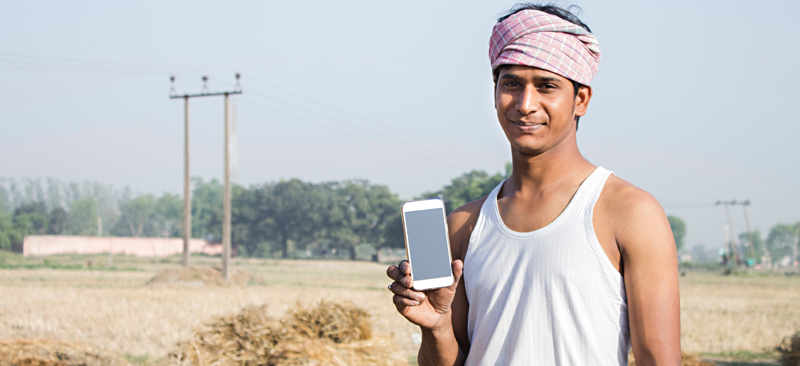This blog post is part of a series that covers promising fintechs making a difference to underserved communities and supported by the Financial Inclusion Lab accelerator program. MSC is a partner to the FI Lab, which is a part of CIIE’s Bharat Inclusion Initiative.
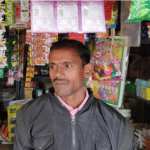
Bhavesh, 42, works at a kirana (grocery) store in Ahmedabad. Having dropped out of school in 5th grade, he struggles with using a mobile phone. So, on his smartphone he is able to call only those who are in his call log. He has to seek help to add or search for a contact or even to watch a YouTube video on his phone. How can Bhavesh maximise the use of his smartphone? |
Individuals like Bhavesh need a mobile interface that goes beyond their language and literacy limitations to help them make the most of their smartphones.
A study concluded that 775 million[1] illiterate people worldwide struggle to use text-heavy smartphones. Hence, while mobile applications have found broad usage across developing countries, usability remains a major hurdle for populations with the illiterate or low literate population. Hence, literacy levels remain a key barrier to providing access to information through technology. Navana Tech offers intuitive, text-free, voice-assisted, and image-based software development kit (SDK) that help bridge the digital divide between the literate and low-literates.
Not going by the word
When brothers and Cornell University graduates Raoul and Jai Nanavati started building products for the Indian markets, they faced a fundamental problem in the design. For example, the icon of a shopping cart could not be identified by a user who has never seen a physical shopping cart. The complex interfaces confused users in India, especially those in Tier 2 and 3 cities, dissuading them from accessing the same digital services as their literate counterparts.
 Through Navana Tech, the duo developed a solution that addressed the limitations and litOS was born. At Cornell, they were one of the four student teams picked out of 45 to win a startup investment award of USD 80,000.
Through Navana Tech, the duo developed a solution that addressed the limitations and litOS was born. At Cornell, they were one of the four student teams picked out of 45 to win a startup investment award of USD 80,000.
A pitch: Beating the literacy barrier
Navana Tech offers research-driven design standards and developer tools to assist businesses to build intuitive mobile user-interfaces. It brings localized iconography, contextual voice assistance in nine Indian languages, and plug-and-play user flows. The Navana Tech Voice Dialer feature allows users to add or search for a contact by saying the name instead of typing it.
The evolution: Making the low-literates independent in mobile usage
Boot camps, diagnostic sessions, and clinics conducted by Centre for Innovation Incubation and Entrepreneurship (CIIE) and MicroSave Consulting (MSC) proved to be beneficial for Navana Tech. The experts advised Navana Tech to pivot their product offering from an operating system to a set of mobile applications based on SaaS model. The team also helped the company overcome challenges like:
Identifying the right user segment: The categories of mobile users in India are quite disparate in terms of literacy, access to mobile devices, and mobile literacy. It is hard to classify these categories to identify one common customer segment to target. Also, due to a lack of resources, Navana Tech struggled to conduct extensive testing on its product, and was unable to identify the product challenges faced by different user segments.
MSC helped test Navana Tech’s voice dialer application across geographies and customer segments including factory workers, Micro Finance Institution (MFI) customers, truck drivers, and shopkeepers. MSC helped Navana Tech understand the needs and abilities of different user segments while using mobile applications. The research insights helped Navana Tech to refine their offerings and target customers effectively. Eventually, it enabled the team to build a better and more user-friendly app.
- Designing an intuitive interface: The potential target segments varied based on mobile usage and literacy. So, it was challenging for Navana Tech to design an intuitive interface for an illiterate or low literate population; that closely replicated their familiar experience of an Android phone.
With MSC’s guidance, Navana Tech narrowed down the intuitive process of adding and searching for a contact. MSC also helped the firm build relevant iconography and relatable visual cues.
The future is mobile-literate
Navana Tech believes that smartphone penetration, mobile data usage, and online banking will redefine the fintech landscape in India. Various discussions during acceleration, helped Navana to identify the importance of partnership to reach users on a large scale. Today, the team works closely with its partners like Ujjivan Small Finance Bank (SFB) to re-design the Ujjivan mobile app for low-literate users. Navana Tech is also in the process of on-boarding two more partners in 2019.
In the future, Navana Tech aspires to impact the lives of millions of low-literate customers like Bhavesh. The aim is to customize products for the underserved segment and increase their access to digital solutions. Accordingly, Navana Tech believes that its business can reduce the digital divide while still achieving a sustainable revenue model and business growth.
[1] Indrani Medhi Thies, User Interface Design for Low-literate and Novice Users: Past, Present and Future, Now Publishers Inc., 2015
Follow #TechForAll and #BuildingForBharat to stay updated on fintech start-ups driven to bridge the social, financial and economic inclusion gap.
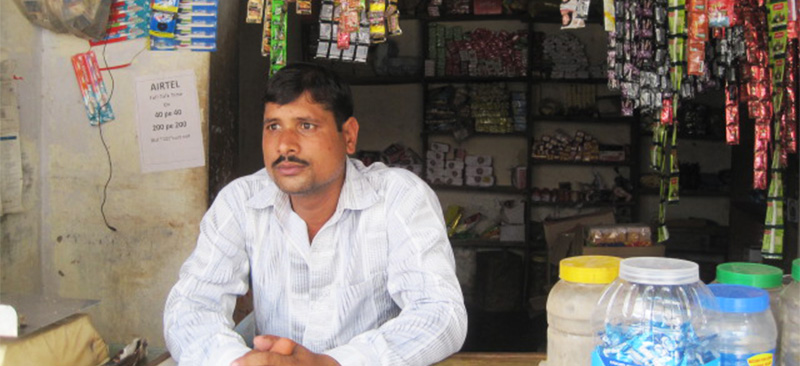
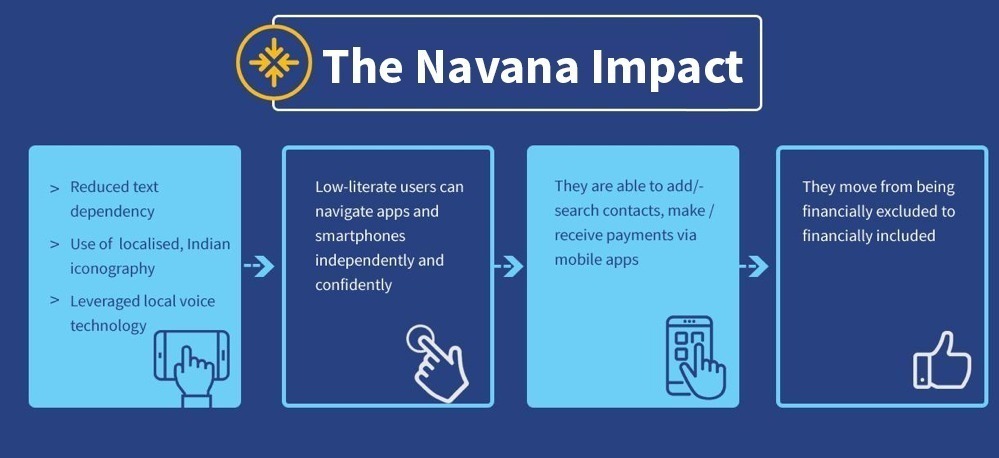


 SureClaim is co-founded by Anuj Jindal who looks after business development and Varun Kansal who manages operations. Their experience of working at Practo, Qikwell, and other companies provided them an understanding of the vital nuances of the insurance domain. Kshitiz Gupta, a technology expert with multiple stints at renowned firms like Expedia, Adobe, and Walmart, has completed the trio.
SureClaim is co-founded by Anuj Jindal who looks after business development and Varun Kansal who manages operations. Their experience of working at Practo, Qikwell, and other companies provided them an understanding of the vital nuances of the insurance domain. Kshitiz Gupta, a technology expert with multiple stints at renowned firms like Expedia, Adobe, and Walmart, has completed the trio.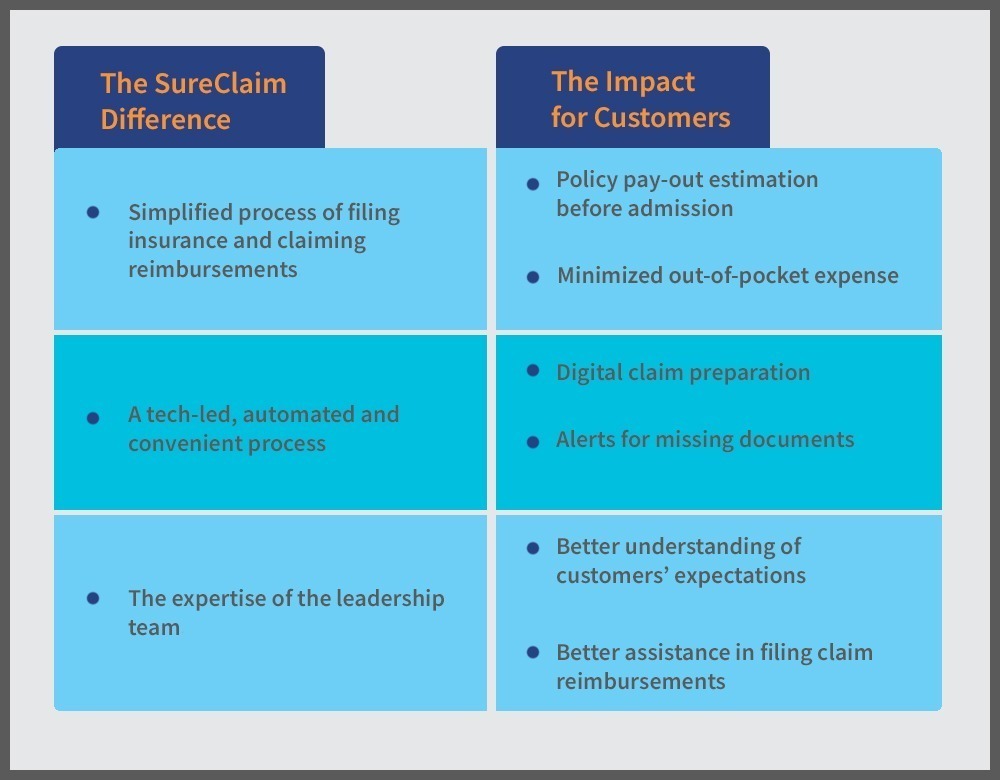

 Jatin conceived the idea of GramCover – a rural insurance distribution start-up and Rishabh Garg as well as Dhyanesh Bhatt joined in later as CTO and CEO respectively. The app aims to tap into the unserved markets and offer customized insurance products to LMI customers. GramCover intends to make insurance accessible at affordable rates via a digital platform.
Jatin conceived the idea of GramCover – a rural insurance distribution start-up and Rishabh Garg as well as Dhyanesh Bhatt joined in later as CTO and CEO respectively. The app aims to tap into the unserved markets and offer customized insurance products to LMI customers. GramCover intends to make insurance accessible at affordable rates via a digital platform.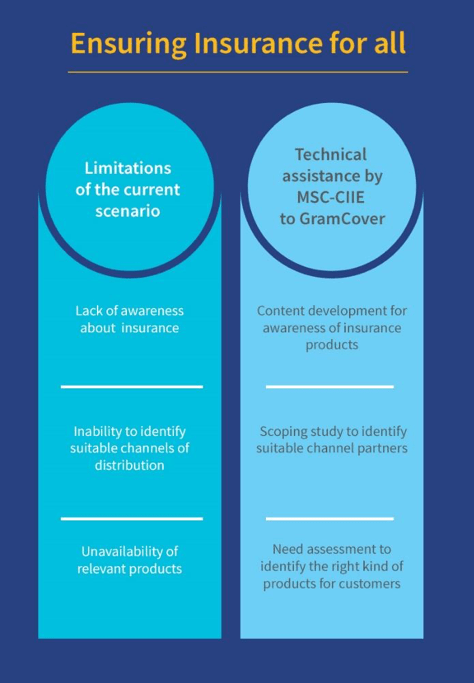


 Co-founders, Sanjay Gandhi and Manisha Pandita’s partnership dates back to their Harvard University times. Since their undergraduate study, the duo has been working extensively at the intersection of technology and financial services. Sanjay honed his technical skills as a software developer for one of the world’s largest high-frequency trading firms. Manisha, on the other hand, learned about diverse customer segments during her stint as deputy global lead for financial services at Dalberg—an international development consulting firm.
Co-founders, Sanjay Gandhi and Manisha Pandita’s partnership dates back to their Harvard University times. Since their undergraduate study, the duo has been working extensively at the intersection of technology and financial services. Sanjay honed his technical skills as a software developer for one of the world’s largest high-frequency trading firms. Manisha, on the other hand, learned about diverse customer segments during her stint as deputy global lead for financial services at Dalberg—an international development consulting firm.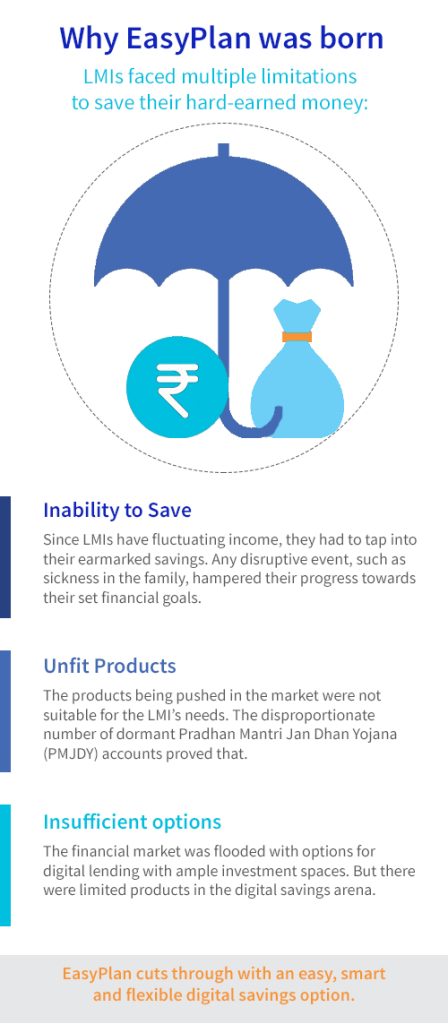

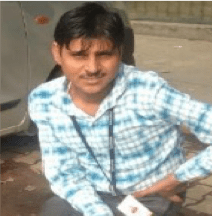 Rohan, 21, works as a sales staff at a mall in Pune and makes INR 15,000 / month (USD 220). After remitting money to his parents in Bihar, and paying off expenses, Rohan can hardly save. For any emergency, he will have to borrow funds from friends or even moneylenders who may charge exorbitant interest rates. Since Rohan does not possess adequate documents, approaching a bank for his credit needs is out of question. Can Rohan come out of the vicious cycle?
Rohan, 21, works as a sales staff at a mall in Pune and makes INR 15,000 / month (USD 220). After remitting money to his parents in Bihar, and paying off expenses, Rohan can hardly save. For any emergency, he will have to borrow funds from friends or even moneylenders who may charge exorbitant interest rates. Since Rohan does not possess adequate documents, approaching a bank for his credit needs is out of question. Can Rohan come out of the vicious cycle?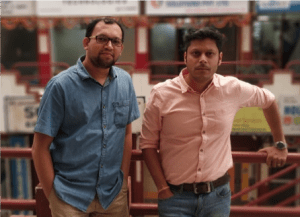 for mobile wallets and in alternate lending. Atish has built numerous enterprise IT platforms, while Tanuj is a sales professional with experience of running a start-up.
for mobile wallets and in alternate lending. Atish has built numerous enterprise IT platforms, while Tanuj is a sales professional with experience of running a start-up.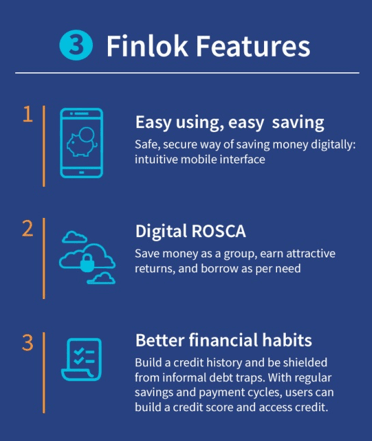
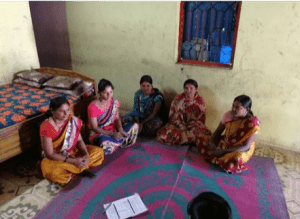 Based on market insights, Finlok understood the importance of building user trust to mobilize them. An intuitive user-interface will also minimize dropouts – from set-up until usage stages. The user experience, including current challenges, will help Finlok refine the app to improve the stickiness.
Based on market insights, Finlok understood the importance of building user trust to mobilize them. An intuitive user-interface will also minimize dropouts – from set-up until usage stages. The user experience, including current challenges, will help Finlok refine the app to improve the stickiness.